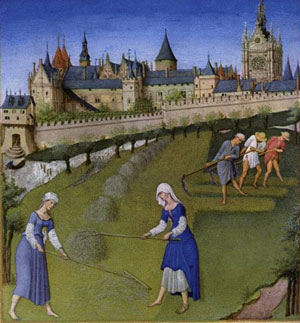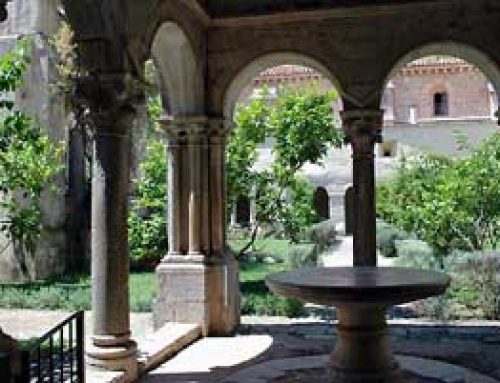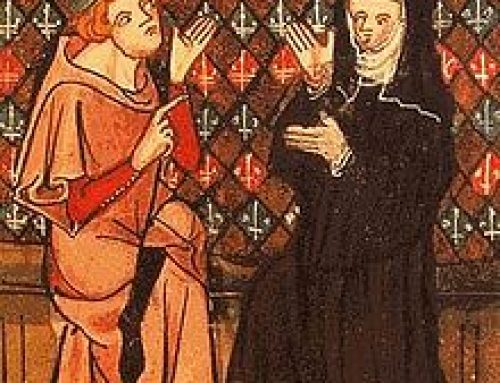
Madonna and child (Donatello)
Medieval families
The way people thought about each other in the Middle Ages, everyone was involved in complicated systems of relationships with each other. The first relationships people had were with their own families. In medieval European families, most kids lived with their father and mother and brothers and sisters.
History of the family
All our Medieval Europe articles
Because people died young from diseases, a lot of kids also lived with other relatives. Or they just lived with an older brother or sister, because their parents had died. Most kids never knew their grandparents, who had died before they were born.

Medieval peasant clothing, from the Très Riches Heures du Duc de Berry (1400s AD)
Medieval schools
In the Middle Ages, hardly anyone went to school. Kids worked in the fields, or took care of younger brothers and sisters. A few children, usually from richer families, were given to monasteries or abbeys to be monks and nuns. Older monks and nuns sometimes taught these children to read and write. The children of very rich men and women sometimes had tutors at home.
Education in medieval Europe
Christian monks and nuns
History of schools

A Roman shepherd, probably a slave (Istanbul, 500s AD)
Teenagers, around the age of twelve or thirteen, often went out to work for somebody else. Sometimes they worked for their neighbors, helping to plow the fields or take care of babies or animals. Sometimes they worked for richer families, as servants, as Chaucer did, for instance. Or their parents apprenticed them to learn a skill like weaving or blacksmithing.
History of weaving
What is blacksmithing?
History of slavery
Many teenagers lived with the people they worked for. Some people were still slaves, as in the Roman period. Medieval European traders made a lot of money enslaving prisoners and selling them into slavery. A lot of enslaved people had to go work in West Asia or North Africa.
Landlords and rent
Most peasants rented land from a richer man or woman who owned a big estate. They owed their landlord or landlady rent, and also a lot of other obligations. The peasants had to go to war with their landlord if there was a war. And they had to work a certain number of days every year for their landlady. Often peasants had to give their landlord or landlady a certain number of chickens or a certain amount of honey or spun wool or firewood every year.
What is spinning?
Where did honey come from?
Where are chickens from?
How do people fall into debt?
Even peasants who owned their own land often had some of these obligations to the nearest powerful person, as taxes. In exchange, the powerful person was supposed to protect the peasants from invasions and from the king. Rich people were supposed to give people food when there was a drought, and enforce the law (which was mainly whatever he or she said it was).

Medieval people: a monk, a knight, and a peasant
Feudal government
Each of these powerful people, in turn, owed obligations to a more powerful person. Each count or countess, for instance, owed obligations to a duke (or duchess) or an earl. If there was a war, the count had to go to the war with his peasants, to fight for the duke. And the count had to send valuable presents to the duke as well, every year. In exchange, again, the duke was supposed to protect the count.
What is feudalism?
What is a monarchy?
Medieval European government
Over everybody was the king or queen. Even the dukes and earls were supposed to fight for the king or queen and send him or her presents. But a lot depended on the king being strong enough to make them! Sometimes if the duke was strong enough, he just refused to come.
The Catholic Church
Some peasants also rented land from the Catholic Church. The Church owned about a third of the land in Europe during the Middle Ages. Their landlord would be a bishop instead of a count.
What is a bishop?
Then over the bishop was the archbishop, and then the cardinal, and over all of those the Pope in Rome. And some people became monks or nuns, in the service of the Church, instead of being peasants.
Learn by doing: a medieval castle project
More about feudalism
Bibliography and further reading about daily life in the Middle Ages:




